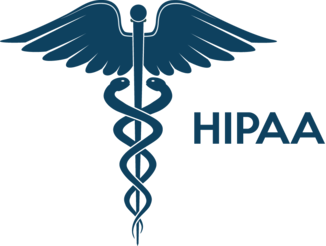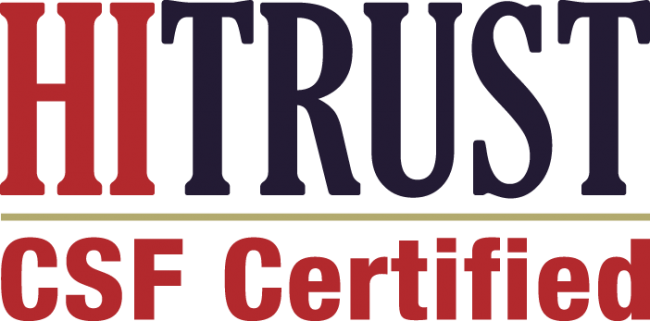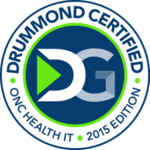Introduction: The Growing Opportunity in Remote Therapeutic Monitoring
The healthcare landscape is rapidly evolving toward value-based care models, and Remote Therapeutic Monitoring (RTM) has emerged as a cornerstone of this transformation. Since its introduction in the 2022 Medicare Physician Fee Schedule, RTM has opened new revenue streams for healthcare providers while simultaneously improving patient outcomes through continuous therapeutic engagement. For practices looking to maximize their Medicare reimbursements while delivering superior patient care, understanding and implementing RTM is no longer optional, it’s essential.
Understanding the CMS Remote Therapeutic Monitoring Program
What is RTM?
Remote Therapeutic Monitoring is a Medicare-reimbursed program designed to enable healthcare providers to monitor patients’ therapeutic progress outside traditional clinical settings. Unlike Remote Patient Monitoring (RPM), which focuses on physiological data like blood pressure and glucose levels, RTM tracks non-physiological data including:
- Musculoskeletal system status
- Respiratory system status
- Medication and therapy adherence
- Therapy response
- Pain levels and functional outcomes
This distinction is crucial because RTM data can be self-reported by patients, making it particularly valuable for managing chronic conditions, post-surgical rehabilitation, and ongoing therapeutic interventions.
The Five RTM CPT Codes and 2025 Reimbursement Rates
The Centers for Medicare & Medicaid Services (CMS) established five distinct CPT codes for RTM services, each addressing different aspects of remote therapeutic care:
- CPT 98975 – Initial Setup and Patient Education
- Reimbursement: $19.73 (one-time)
- Requirements: Initial device setup and patient education on equipment use
- Billing: Once per episode when at least 16 days of data have been collected
- CPT 98976 – Respiratory System Device Supply
- Reimbursement: $43.02 (every 30 days)
- Requirements: Device supply with scheduled recordings and programmed alerts for respiratory monitoring
- Billing: Monthly when at least 16 days of data collected
- CPT 98977 – Musculoskeletal System Device Supply
- Reimbursement: $54.99 (every 30 days)
- Requirements: Device supply with scheduled recordings and programmed alerts for musculoskeletal monitoring
- Billing: Monthly when at least 16 days of data collected
- CPT 98980 – Treatment Management Services (Initial 20 minutes)
- Reimbursement: $50.14 (monthly)
- Requirements: Initial 20 minutes of treatment time per calendar month with at least one interactive communication
- Billing: Can be billed “incident to” under general supervision
- CPT 98981 – Treatment Management Services (Each Additional 20 minutes)
- Reimbursement: $39.14 (monthly)
- Requirements: Each additional 20 minutes of treatment time per calendar month
- Billing: Multiple units allowed with proper documentation
Revenue Potential: The Numbers Speak for Themselves
When implemented effectively, RTM can generate $150+ per patient per month in Medicare reimbursements. For a practice managing 100 RTM patients, this translates to approximately $15,000 in monthly recurring revenue or $180,000 annually. Practices leveraging comprehensive care management platforms report up to 40% increase in care management revenues within six months of implementation.
CMS data reveals the explosive growth in this sector: Part B paid an estimated $910 million for RPM/RTM services in 2024, up from $712 million in 2023—a clear indication of the program’s expanding adoption and acceptance.
Key CMS Updates and Compliance Requirements
2024 Final Rule Clarifications
The CMS 2024 Medicare Physician Fee Schedule Final Rule introduced several important clarifications that healthcare providers must understand:
- Established Patient Relationships RTM services do not technically require an established patient relationship, unlike RPM services. However, CMS recommends that RTM be furnished only after a treatment plan has been established following an initial evaluation. While not a strict requirement, failing to conduct this initial interaction may expose practitioners to post-payment audits.
- General Supervision for Physical and Occupational Therapists A significant change allows Physical Therapists (PTs) and Occupational Therapists (OTs) in private practice to provide general supervision for RTM services. This enables broader access to RTM within therapeutic specialties and allows assistants to support RTM tasks under supervision.
- Billing Restrictions
- Only one practitioner can bill RTM services for a patient in a 30-day period
- RTM and RPM cannot be billed together during the same month
- Practitioners receiving global service payments cannot bill for RTM during the global period
- However, therapists who did not perform the surgery can provide RTM for post-surgical rehabilitation
- Data Collection Requirements The 16-day data collection requirement applies to device supply codes (98975, 98976, 98977) but does not apply to treatment management codes (98980, 98981). The management codes are time-based and require documentation of time spent rather than days of data collection.
- Concurrent Billing Opportunities RTM can be billed concurrently with several other care management services, including:
- Chronic Care Management (CCM)
- Principal Care Management (PCM)
- Transitional Care Management (TCM)
- Behavioral Health Integration (BHI)
- Chronic Pain Management (CPM)
This flexibility enables providers to maximize reimbursements while delivering comprehensive care.
2025 Updates for FQHCs and RHCs
In 2024, Federally Qualified Health Centers (FQHCs) and Rural Health Clinics (RHCs) could only bill RTM under the general care management code HCPCS G0511. Starting in 2025, these facilities can use standard CPT codes, with G0511 being phased out by September 30, 2025. This change provides more granular billing opportunities and potentially higher reimbursements for these critical access facilities.
Common Implementation Challenges
Despite the lucrative revenue potential, many healthcare practices struggle to fully realize RTM’s benefits due to several operational challenges:
1. Complex Documentation Requirements
CMS requires detailed monthly documentation to support RTM billing, including:
- Patient consent and enrollment records
- Device setup and education documentation
- Time tracking for treatment management services
- Interactive communication logs
- Therapeutic progress notes
Manual documentation is time-consuming and error-prone, leading to denied claims and lost revenue.
2. Patient Engagement and Adherence
Sustaining patient engagement with RTM programs requires continuous effort. Patients must consistently use monitoring devices, report symptoms, and participate in interactive communications. Low adherence rates directly impact billing eligibility.
3. Device Integration and Data Management
Integrating multiple medical devices with existing EHR systems presents technical challenges. Providers need seamless data flow from devices to their clinical workflows to make RTM practical and sustainable.
4. Compliance and Audit Risk
With the OIG reporting that 28% of RPM/RTM enrollees never had claims for device setup, 23% never had device supply claims, and 12% didn’t receive treatment management services, audit risk is real. Proper compliance tools and documentation are essential to avoid costly penalties.
5. Billing Complexity
Navigating the intricate billing rules—including which codes can be billed together, time requirements, and documentation standards—requires specialized expertise that many practices lack.
Introducing HealthViewX: Your RTM Success Partner
This is where HealthViewX transforms the RTM landscape. The HealthViewX Care Orchestration Platform addresses every challenge outlined above with a comprehensive, cloud-based solution designed specifically for CMS care management programs.
Core Features of HealthViewX RTM Application
- Seamless Device Integration HealthViewX integrates with FDA-approved RTM devices for both musculoskeletal and respiratory monitoring. The platform captures real-time patient data automatically, eliminating manual data entry and ensuring accurate, continuous monitoring.
- Automated Documentation and Compliance The platform’s game-changing feature is its minute-by-minute automated documentation of all care activities:
- Automatic logging of patient interactions
- Time tracking for treatment management services
- Patient consent and enrollment documentation
- Audit-ready reports and documentation
This automation ensures a 100% CMS audit pass rate—a claim backed by HealthViewX’s active client base across multiple continents.
- Bidirectional EHR Integration HealthViewX offers seamless integration with any EMR/EHR, HMS, or LIS system through its proprietary HealthBridge Interoperability Engine. This ensures:
- Real-time data synchronization
- Elimination of data silos
- Automated patient identification and eligibility checks
- Comprehensive care coordination across platforms
- Multi-Channel Patient Engagement The platform provides robust tools to keep patients engaged:
- Patient mobile app for easy data reporting and communication
- Two-way messaging for provider-patient interaction
- Automated reminders for device use and medication adherence
- E-consents for streamlined enrollment
- Educational resources to empower patients
Higher engagement translates directly to better adherence rates and sustained billing eligibility.
- Customizable Care Plans HealthViewX offers customizable care plan templates tailored to various conditions monitored under RTM. Providers can personalize interventions based on individual patient needs, therapy types, and clinical goals.
- Real-Time Analytics and Insights The platform includes:
- Advanced dashboards for monitoring program performance
- AI-driven insights and predictive analytics
- Real-time alerts when patient data indicates potential issues
- Comprehensive reporting for informed decision-making
Revenue Optimization with HealthViewX
HealthViewX doesn’t just help you deliver RTM, it helps you maximize revenue:
- Real-Time CPT Code Tracking The platform automatically tracks all billable activities and matches them to appropriate CPT codes, reducing billing errors and ensuring maximum reimbursement.
- Comprehensive Billing Support
- Auto-logging of care minutes
- CMS-compliant documentation generation
- Support for concurrent billing with CCM, PCM, and other services
- Reduced claim denials through accurate documentation
- Scalable Staffing Models HealthViewX supports flexible staffing approaches:
- In-house care coordination teams
- Hybrid models combining internal and external resources
- Fully outsourced care management services
This flexibility allows practices to optimize ROI based on their unique operational needs.
- Multi-Program Integration The platform unifies all CMS care management programs on a single interface:
- Chronic Care Management (CCM)
- Remote Patient Monitoring (RPM)
- Remote Therapeutic Monitoring (RTM)
- Behavioral Health Integration (BHI)
- Transitional Care Management (TCM)
- Annual Wellness Visits (AWV)
- Psychiatric Collaborative Care (CoCM)
Providers can earn an average of $500–$1,000 per patient annually through comprehensive CMS reimbursements when leveraging multiple programs.
Real-World Impact: By the Numbers
Organizations using HealthViewX report impressive results:
- 40% increase in care management revenues within 6 months
- 100% CMS audit pass rate across the client base
- $150+ per patient per month in RTM revenue at scale
- 50% improvement in referral processing time
- 40% reduction in referral/revenue leakage
- Practices earning $500–$1,000 per patient annually through integrated care management
Industry Recognition
HealthViewX’s innovation hasn’t gone unnoticed:
- Listed in Newsweek & Statista’s World’s Best Digital Health Companies 2024
- Active client base across 5 continents
- HIPAA-compliant, SOC 2-certified platform
- Multiple USPTO patents protecting care orchestration technology
The Future of RTM: Looking Ahead to 2025 and Beyond
The RTM landscape continues to evolve, with several trends on the horizon:
Expanded Clinical Applications
While RTM currently focuses on chronic conditions and rehabilitation, expect expansion into:
- Post-surgical care across more specialties
- Mental health monitoring
- Preventive care applications
- Pain management programs
Enhanced Technology Integration
- AI and machine learning for sophisticated predictive analytics
- More advanced device interoperability
- Enhanced patient engagement tools
- Improved care coordination capabilities
Evolving Reimbursement Policies
The AMA CPT Editorial Panel approved new RPM/RTM codes effective January 2026, including:
- Removal of the 16-day data requirement for certain codes
- New codes for 10-19 minutes of data management
- Potentially revised reimbursement rates
Digital Mental Health Treatment (DMHT)
CMS proposed new codes (GMBT2 and GMBT3) cross-walked to existing RTM codes for FDA-cleared digital therapeutic devices treating mental health conditions. This could significantly expand RTM’s scope into behavioral health.
Stricter Compliance Requirements
With the growth of RTM and increased scrutiny from the OIG, expect:
- More rigorous documentation requirements
- Enhanced audit activities
- Greater emphasis on demonstrating medical necessity
- Stronger penalties for non-compliance
HealthViewX is already positioned for these changes, with continuous platform updates to ensure practices remain compliant and can maximize emerging reimbursement opportunities.
Getting Started: Your RTM Implementation Roadmap
Implementing a successful RTM program requires strategic planning. Here’s a practical roadmap:
Phase 1: Assessment and Planning (Weeks 1-2)
- Identify target patient populations
- Assess current technology infrastructure
- Define staffing models and responsibilities
- Set revenue goals and KPIs
Phase 2: Technology Implementation (Weeks 3-4)
- Deploy HealthViewX platform
- Integrate with existing EHR systems
- Configure care plan templates
- Train staff on platform use
Phase 3: Patient Enrollment (Weeks 5-8)
- Identify eligible patients
- Obtain patient consent
- Conduct initial evaluations
- Set up devices and educate patients
Phase 4: Program Management (Ongoing)
- Monitor patient adherence
- Conduct interactive communications
- Document care activities
- Submit claims for reimbursement
- Analyze program performance
Phase 5: Optimization and Scaling (Months 3-6)
- Refine workflows based on data
- Expand to additional patient populations
- Integrate with complementary programs (CCM, PCM)
- Scale staffing as needed
The good news? HealthViewX streamlines this entire process. Their implementation team manages the heavy lifting, reducing time-to-value and eliminating common barriers to entry.
Value-Based Care: The Bigger Picture
RTM isn’t just about revenue—it’s about fundamentally transforming how care is delivered:
Improved Patient Outcomes
- Better medication adherence through continuous monitoring
- Earlier identification of therapeutic issues
- More proactive interventions
- Enhanced patient engagement and self-management
Reduced Healthcare Costs
- Fewer emergency department visits
- Decreased hospital readmissions
- Prevention of complications through early intervention
- Lower total cost of care
Enhanced Provider Satisfaction
- More meaningful patient interactions
- Data-driven clinical decision-making
- Reduced administrative burden through automation
- Sustainable practice growth
Meeting Value-Based Care Requirements
As healthcare continues its shift from fee-for-service to value-based models, RTM positions providers to succeed in:
- Medicare Shared Savings Programs (MSSP)
- Accountable Care Organizations (ACOs)
- Merit-based Incentive Payment System (MIPS)
- Alternative Payment Models (APMs)
Conclusion: The Time to Act is Now
Remote Therapeutic Monitoring represents one of the most significant opportunities in healthcare today—a rare convergence of improved patient outcomes, sustainable revenue growth, and alignment with value-based care principles. With $910 million paid by Medicare in 2024 and projections for continued growth, the RTM market is expanding rapidly.
However, success in RTM requires more than just understanding the codes—it demands a comprehensive technological solution that addresses the operational, clinical, and compliance challenges inherent in remote care delivery.
HealthViewX provides that solution. With its unified care orchestration platform, automated documentation, seamless EHR integration, and proven track record of success, HealthViewX empowers healthcare organizations to:
✅ Capture the full revenue potential of RTM and other CMS programs
✅ Deliver superior patient care through continuous engagement
✅ Maintain 100% compliance with CMS requirements
✅ Scale efficiently without proportional increases in staffing
✅ Future-proof operations for evolving healthcare models
Whether you’re a solo practitioner, physician group, FQHC, health system, or value-based care organization, the question isn’t whether to implement RTM—it’s how quickly you can do so effectively.
The ideal time to start was January 1, 2024. The next best time is today.
Ready to Unlock Your RTM Revenue Potential?
Schedule a demo with HealthViewX and discover how their Care Orchestration Platform can transform your practice’s approach to remote therapeutic monitoring. See firsthand how leading healthcare organizations are leveraging HealthViewX to deliver exceptional patient care while maximizing Medicare reimbursements.
Contact HealthViewX today to begin your journey toward value-based profitability and sustainable practice growth.






